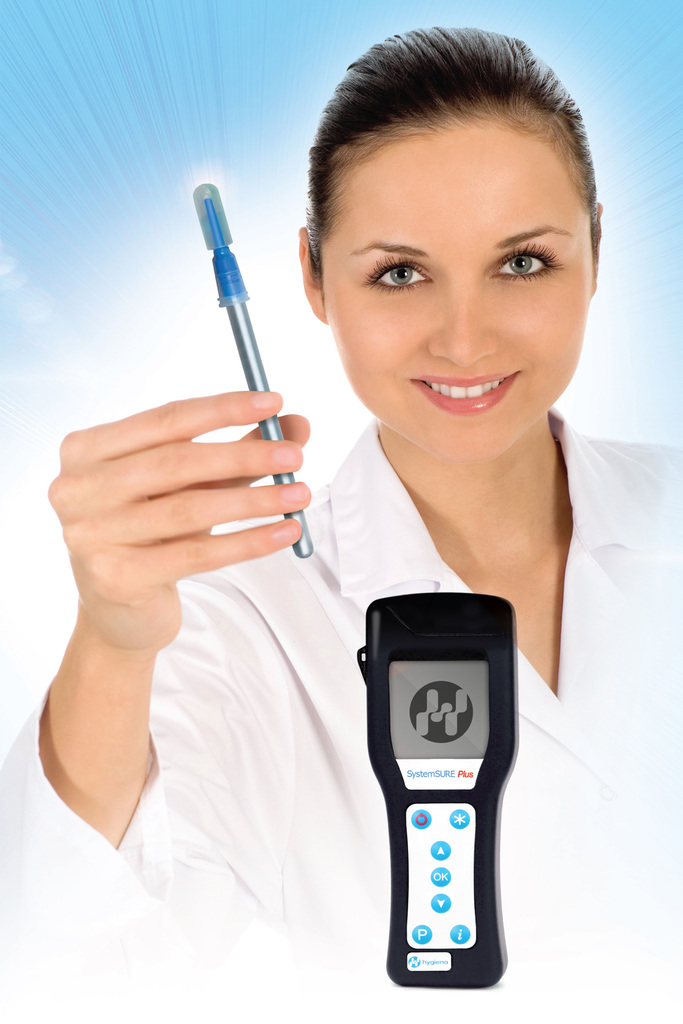
Kelly Rose
Editor

Kelly Rose
Editor
Many hospitals are seeing the benefits of using Hygiena SystemSURE Plus ATP hygiene monitoring equipment for the verification of cleaning, according to Hygiena International.
It adds that the implementation of a hygiene monitoring programme has provided the impetus for a number of changes that have taken place and has many uses in different departments.
Following 10 years of research, evaluation and use with healthcare, specific benchmarks and standards of cleanliness for ATP have been determined and are also established in official standards such as DS2451-10 2011 in Denmark and Sweden.
The evidence provided by the ATP monitoring system has justified that interventions are fit for purpose, provide good performance and offer value for money. The system and the objective data generated has now become part of the daily routine practiced by hospitals, and provides evidence of due diligence.
Earlier adopters such as North Tees and Hartlepool Trust have shown a consistent and marked improvement in cleanliness and reductions in infection rates since its introduction in 2008. The results have shown a >20% improvement in pass rates and a large reduction in fail scores to fewer than 5% with a corresponding decrease of 35% in C. difficile cases and a 39% reduction in infections per 10,000 occupied bed days.
Monitoring officers, independent from nursing and environmental services staff, are assigned to act as project champions for individual facilities, reporting to departmental managers wherever poor cleaning was discovered and where corrective action is required. Monthly reports are circulated for cross-functional team meetings of nursing, facilities and infection control staff. This allows for open discussions on all cleaning and maintenance related issues and stimulates actions for improvement.
The Hygiena SystemSURE Plus received the highest recommendation for the Dept of Health and Public Health England’s Rapid Review Panel in 2009 and it has many different applications within hospitals including the routine testing of patient rooms, identification of hotspots and hazard management, training of cleaning staff, and hand wash training and verification.
Hygiena International says that the benefits of the ATP cleaning verification system include a dramatic improvement in hospital cleanliness, optimised cleaning performance and personnel training, increased productivity, commitment and moral of cleaning staff and reduced infections rates.
Similar improvements are seen in USA where the CDC also recommends the use of ATP as part of the monitoring tool kit for environmental cleaning.
The Environmental Services (EVS) manager (Gomez) at Deaconess Rehabilitation Hospital in Evansville, Indiana said: "Realizing that our surfaces were not as clean as we thought was—quite honestly—a slap in the face. But it was a good wakeup call for everyone, especially me."
He added: "ATP testing has truly helped us become aware of our cleaning techniques. We now hold educational meetings to discuss the programme’s success and areas where we still have trouble—to make sure we’re quick to correct any problems that consistently show up in our ‘fails’ report."
A review by an independent company rated the Evansville healthcare system the highest score for cleanliness among more than 600 facilities the company surveyed. ATP testing played a significant role in that achievement.

Unit 1
Wenta Business Centre
Colne Way
Watford
WD24 7ND
UNITED KINGDOM
01923 818821